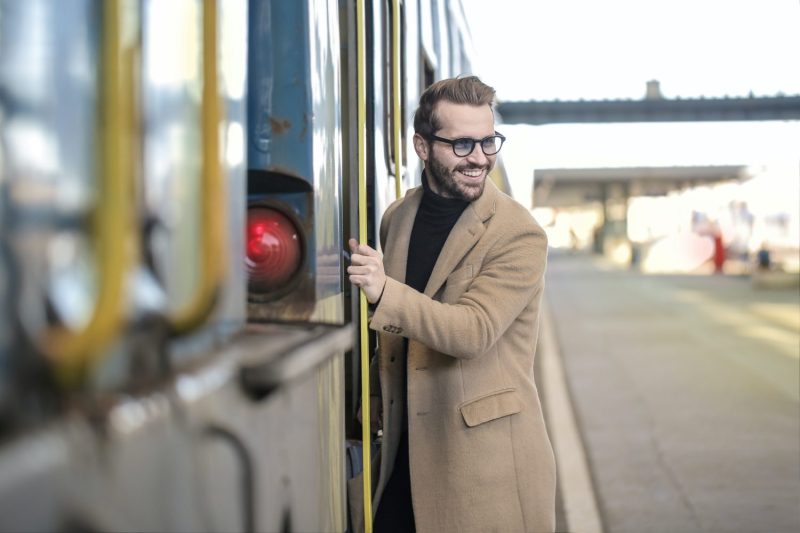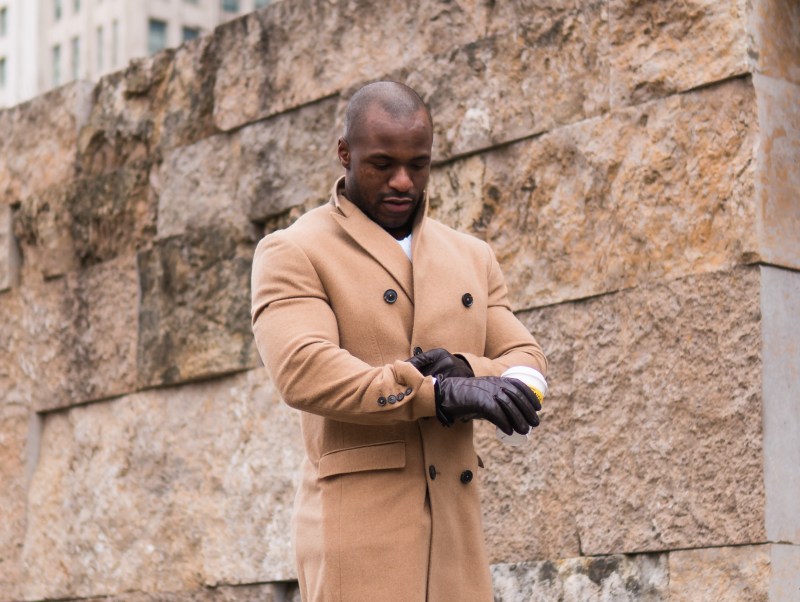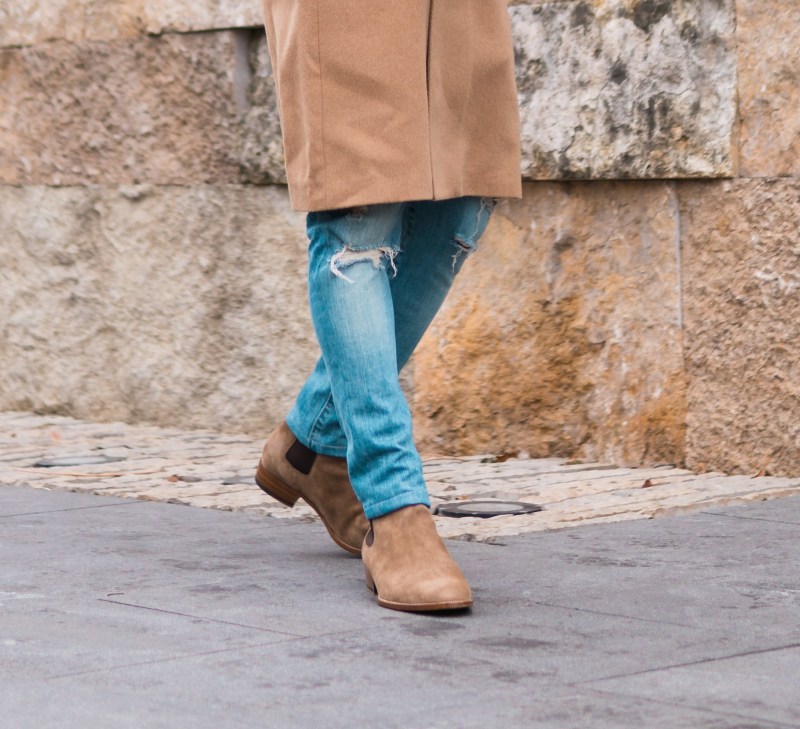Winter is heading your way fast. Fall has been going on for a few weeks now, and the temperatures have been declining slowly, but as we get closer to the holidays, you’ll need something to keep you warm and dry. The best coats on the market constantly shift and change quickly. However, there are some classics and trends that never go away.
As the cold weather approaches, we are here to ensure your coat game is top notch. Overcoats are a particular type of coat. They’re meant to keep you warm and dry when wearing more elevated clothing. That doesn’t mean you can’t wear them when you are more casual, but there are some things you need to know and tips to follow to stay in style. Here are some of the more common overcoat types and how to wear them.
Check the fit

We’ll work with what you have in the closet. Hopefully, you checked out our guide to buying an overcoat and got the right fit for yourself. Maybe you even got a stylish men’s wool overcoat. Regardless of what overcoat you choose, the size of the coat that you bought will determine what you can wear underneath it.
For instance, you want the coat to be longer than your suit jacket and often end above your knees. The sleeves should reach the first knuckle of your thumb — long enough to cover the sleeves of your jacket or sweater underneath it. Remember that the thicker your layers, the shorter the sleeves of your overcoat will be, making the size important.
Single-breasted overcoat

If you pick up a single-breasted overcoat, you have an outerwear garment that ranges from formal over your best suits to something more casual. It’s a bit of an elevated style, so ultra-casual looks won’t always work best with this coat. A single-breasted overcoat is known for the single column of buttons down the middle and usually a skinnier lapel, similar to your best suits.
When dressing this coat up, button up the front and pair it with the right scarf, gloves, and hat to complete the look. The most stylish ensembles ensure that the coat and accessories complement the outfit.
To dress this coat down, keep it open and pair it with a sweater and denim. If you wear a scarf, let it drape instead of knotting it around your neck.
Double-breasted overcoat

If you chose a double-breasted overcoat, you are the pinnacle of class and style. This is the most traditional overcoat and is meant to elevate anything you wear with it. It’s known for its wider lapels and two columns of buttons, usually six. The first thing to remember is that this coat is always designed to be worn buttoned up with the bottom button left open, precisely like your double-breasted suits.
There’s no need to attempt to dress this coat up; the job is done for you. Wear your suits underneath and jazz them up with the best accessories. Some of these coats have breast pockets, so if you’re feeling sassy, you can wear a pocket square just like you would with your suits.
If you’re trying to dress this coat down, don’t. A peacoat is a more casual double-breasted coat, but if you want to wear it, we wouldn’t recommend pairing it with anything more casual than dress pants and a button-up.
Duffle coat

If the duffle coat is your choice, you value variety and versatility. This coat ranges from ultra-casual to elevated dress ensembles better than any other on this list. This single-breasted coat is known primarily for the wooden toggle buttons. It’s casual enough to work with almost any look, but the coat’s military history helps elevate everything in your closet.
When dressing this coat up, remember that it has many uses. In formality, it’s just under the double-breasted coats. If possible, remove the hood to keep it understated.
In formal attire, it falls just below the double-breasted coat, and in casual clothing, it sits just above the peacoat. Keep the hood on and unbutton the coat to show off your sweater or henley underneath.
Mackintosh overcoat

If you chose the Mackintosh as your overcoat, there are two reasons. One, you live in a place like the Pacific Northwest that sees a fair amount of rain and need the waterproof feature. Two, you love the movie Casablanca. This coat features a waxed outer layer that keeps you dry in even the heaviest of downpours and a belt that keeps the coat nice and tight around your body in heavy storm winds.
Dressing this coat up protects your more formal outfits, such as your suit and ties. If it’s raining, the best practice is to ditch the scarf and button this coat up to your neck to keep your clothes underneath clean and dry.
While this coat will work with anything and is more for function than fashion, you could swap this out with more of a puffy or quilted jacket to protect your casual ensembles.
Peacoat

This is perhaps the most casual overcoat on this list, and that’s likely because it isn’t precisely an overcoat. A peacoat is generally cut much shorter than the rest of these overcoats, sitting about mid-thigh or higher. Because of this, it is best kept away from more formal events. If you like the double-breasted look, keeping a double-breasted overcoat for your formal looks and a peacoat for your informal looks isn’t a bad idea.
To dress this one up, you can wear it over a turtleneck for a classy look. Wear dark-dress denim with a button-down collared shirt and a knit tie for a stylish and elevated casual outfit to show off a contemporary look.
Dressing down the peacoat is unnecessary, as it’s already a casual coat. If you want to create a classy casual look, return to the coat’s nautical history and wear it with navy chinos and a white T-shirt the way sailors wore them when these coats first appeared on the boats.
Car coat

A car coat is very similar to a peacoat, except that a car coat is a single-breasted coat while a peacoat is a double-breasted one. As the name suggests, car coats were initially designed to keep early automobile drivers and their passengers warm while they were out for a drive, as most cars of the time had open tops. Car coats were originally much longer garments, but as time passed, they evolved into the shorter style that generally stops at the mid-thigh area we see today.
Car coats are designed to be worn looser than some other overcoats, and they are an excellent choice to pair with more casual outfits like jeans and sweaters. Because of its shorter length, it’s best to avoid wearing a car coat with more formal clothing, such as a suit.
Finding the casual balance

In many ways, the overcoat is a dressed-up coat. That doesn’t mean you can’t wear it with the more casual side of your wardrobe. However, there is a very particular balance you should attempt to strike if you want to ditch the suit and tie. If you are heading out in your overcoat to run errands or meet friends in a casual situation, here are the things to keep in mind.
- Keep your denim dressy and slim fit. While we’re living in times of more loose-fitting trends, if you’re wearing something more casual and baggy, you will look more like Adam Sandler than you want.
- Ditch the sneakers. Much like the above tip, sneakers will swing this look too far to the casual side of the spectrum. If you want to wear casual shoes similar to your sneakers, opt for dress sneakers or hybrids to keep the overcoat look consistent.
- If you go casual on the outfit, choose one item to elevate to bridge the gap between the overcoat and your casual outfit. The best ideas are a scarf with an attractive knot or Chelseas for great casual shoes.
Overcoats are a staple in the menswear world. Pick up a few for your wardrobe, and your cold days will be the best of the year.




